COLLEGE OF THE ALBEMARLE
EMERGENCY OPERATIONS PLAN
Record of reviews and revisions Date Revision or Review By Whom March 2018 ☒ Revision ☐ Review PLT July 2018 ☐ Revision ☒ Review Policy and Planning Committee November 2020 ☐ Revision ☐ Review ☐ Revision ☐ Review ☐ Revision ☐ Review ☐ Revision ☐ Review ☐ Revision ☐ Review
TABLE OF CONTENTS FORWARD 1 OVERVIEW OF EMERGENCY PREPAREDNESS 3 TYPES OF EMERGENCIES 5 TYPES OF CRISIS AND RESPONSE PRIORITIES 7 AUTHORIZATION TO ACTIVATE COLLEGE EMERGENCY DISASTER PLAN 9 COLLEGE EMERGENCY MANAGEMENT STRUCTURE 11 INCIDENT COMMAND AND EMERGENCY RESPONSE TEAM (ERT) 12 CRISIS PROCEDURES AND RESPONSIBILITIES 15 Responsibilities of Public Information Officer 17 Responsibilities of Facilities Unit Leader 18 Responsibilities of Emergency Response Team 18 Responsibilities of Instructors 18 Responsibilities of Floor/Building Coordinators 19 Responsibilities of Employees 20 GENERAL PROCEDURES 21 EMERGENCY SITUATIONS 21 COMMUNICATIONS 24 Media Control and Public Relations 25 Equipment and Location 26 EMERGENCY PROCEDURES FOR SPECIFIC EVENTS EMERGENCY PROCEDURES FOR BEHAVIOR EMERGENCIES 29 EMERGENCY PROCEDURES FOR BOMB THREAT 31 EMERGENCY PROCEDURES FOR CRIMINAL TRESPASS 35 EMERGENCY PROCEDURES FOR DISORDERLY CONDUCT 37 EMERGENCY PROCEDURES FOR EXPLOSIONS 39 EMERGENCY PROCEDURES FOR FIRE OR SMOKE 41 EMERGENCY PROCEDURES FOR GAS LEAKS, FUMES OR VAPOR 43 EMERGENCY PROCEDURES FOR HAZARDOUS MATERIALS SPILL 45 EMERGENCY PROCEDURES FOR LOCKDOWN 47 EMERGENCY PROCEDURES FOR MEDICAL EMERGENCY 49 EMERGENCY PROCEDURES FOR POWER OUTAGE 51
TABLEOFCONTENTSCONTINUED EMERGENCY PROCEDURES FOR PROTESTS 53 EMERGENCY PROCEDURES FOR SEVERE WEATHER/’TORNADO 55 EMERGENCY PROCEDURES FOR SEXUAL ASSAULT 57 EMERGENCY PROCEDURES FOR SHELTER IN PLACE 59 EMERGENCY PROCEDURES FOR SUICIDE ATTEMPT 61 EMERGENCY PROCEDURES FOR VIOLENCE IN THE WORKPLACE 63 RECOVERY 65 HOW TO OPERATE How to Send Regroup Message How to Establish Phone Conference How to Use Emergency Mass Notification System How to Use Radios Appendix Campus Maps Organizational Chart Check List
FOREWORD
The College of The Albemarle Emergency Operations Plan (EOP) is designed to provide instruction and offer guidelines for addressing crises and natural disasters which may occur at the College of The Albemarle (COA) campuses The goal is to improve the ability of the College to protect lives and property through effective use of college and community resources in emergencies. Whenever an emergency affecting the College reaches proportions that cannot be handled by routine measures, the College President or designee may declare a state of emergency, and the contingency guidelines contained in this plan will be implemented, as needed.
The EOP is divided into three sections to assist individuals in the event of an emergency and it provides resources, guides and information to those who manage emergencies at COA campuses and are responsible for restoring College activities in academic learning and public service in the most efficient way possible. The first section includes the major areas with definitions and responsibilities. The second section includes procedures for each crisis. Section Three contains maps and information about each campus
Emergencies can occur at any time In an effort to protect public safety and health, COA has developed the EOP to enhance preparedness and assist in protecting the college community This plan is designed to be flexible in handling a sudden emergency It is the belief of COA that flexibility will allow the College to accommodate the individual magnitude of severity that each emergency may present.
The procedures outlined in this plan apply to all employees of College of The Albemarle at each of its campuses
While it is impossible to plan for every conceivable event which may threaten the College of The Albemarle campuses, it is the intent of the Board of Trustees that this policy, and the procedures contained in the EOP, be viewed as an “all-hazards” plan The EOP is to be reviewed annually for any changes At that time, any corrections to names and phone numbers will be incorporated as well as required revisions or enhancements to policies and procedures
Revised November 2020
Page | 1
This Page Left Intentionally Blank Page | 2 Revised November 2020
OVERVIEW OF EMERGENCY PREPAREDNESS
The College of The Albemarle Emergency Operations Plan is based on a realistic approach to problems likely to be encountered on campus during a major emergency or disaster. General assumptions are:
An emergency or disaster may occur at any time day or night, weekday or weekend, with little or no warning.
The successions of events in an emergency are not predictable Support and operational plans serve only as guidelines and checklists, and may require modification in order to meet the specific nature of any particular major emergency or disaster.
A major disaster most likely will affect the availability of local, state, and federal services
Emergency services may not be available, and a delay in off-campus emergency services may be expected.
A major emergency may be declared if information indicates such a condition is developing or has a high probability of occurring
Key personnel may not be available or able to carry out tasks and activities during a severe emergency
The emergency organization has been identified and responsibilities have been assigned. Prevention planning is the cornerstone to successful operations during a crisis, therefore it is critical that all employees are properly trained and are familiar with the emergency policies and procedures
When an emergency arises, staff must respond without hesitation. Only preplanning and practice will assure optimum results. Annual drills will be conducted to familiarize all personnel with procedures
In the event of a disaster, all college vehicles will be made available as needed.
The Campus Safety and Security Department maintains a relationship with the local law enforcement agencies, fire departments and emergency management. These agencies are familiar with the property and have participated in emergency response activities to the facility Campus Safety and Security has been instructed on the importance of, and the necessity for, immediately securing the crisis area to allow for safety and space to operate. Depending on the emergency, the entrances to the campus may need to be controlled (traffic) Emergency response personnel will determine the need and assign staff to restrict incoming vehicles. (Only emergency
Page | 3
Revised November 2020
personnel and essential college employees shall be allowed to enter the campus in the event of an emergency)
Revised November 2020
Page | 4
TYPES OF EMERGENCIES
An emergency is a sudden unforeseen crisis that poses an immediate threat to human life or serious damage to property and requires immediate action. This can include man-made or natural disasters Therefore, it is critical for the college to maintain a comprehensive, risk-based emergency plan of preparedness, response, and recovery The major types of emergency covered in this EOP are:
Behavioral Emergency
Bomb Threat
Criminal Trespass
Disorderly Conduct
Explosion
Fire
Gas Leak
Hazardous Materials Spill
Lockdown
Medical Emergency
Power Outage
Protest
Severe Weather/Tornado
Sexual Assault
Shelter-in-Place
Suicide Attempt
Violence in the Workplace
Page | 5
November 2020
Revised
This Page Left Intentionally Blank Page | 6 Revised November 2020Revised August 2018
TYPE OF CRISIS AND RESPONSE PRIORITIES
Emergency incidents at COA campuses are classified according to the severity and potential impact so that emergency response operations can be adjusted for actual conditions. It is important to remember that an incident may be moved from one level to another as more information is received:
Level 1
A minor, localized department or building incident that is quickly resolved with existing college resources or limited outside help. Provide warning or notification as time permits. A Level 1 emergency has little or no impact on personnel or operations outside the locally affected area. Impacted personnel or departments respond to the direction of Physical Facilities, Safety and Security, or their designees until a resolution is found Examples: Odor complaint, localized chemical spill, localized power failure, plumbing failure or water leak, normal fire and law enforcement calls.
Level 2
A major incident or potential threat that disrupts a sizable portion of the campus community Provide warning or notification as quickly as possible. Level 2 emergencies will likely require assistance from external organizations. These events may escalate quickly and have serious consequences for mission critical functions, or may threaten lives Examples: Structure fire, limited structural collapse, significant hazardous material release, extensive power or utility outage, severe flooding, and/or external emergency that may affect college personnel or operations.
Level 3
A major disaster or imminent threat involving the entire campus and/or surrounding community
Immediate warning or notification is mandatory Normal campus operations will be suspended or reduced The effects of the incident are wide-ranging and complex Resolution of the event requires college-wide cooperation and extensive coordination with external agencies and jurisdictions. Examples: Tornado striking a campus, active shooter incident, multi-structure fire, major explosion, major hazardous material release, terrorism incident, major collapse of a structure involving the possible loss of life or serious injury.
In any emergency situation, the College of The Albemarle’s immediate goals are as follows:
The protection of human life
Secure critical infrastructure and facilities
Provide essential services
Activate and staff the Emergency Operations Center, as required
Return the college to normal operating status as soon as possible
Revised November 2020
Page | 7
College of The Albemarle must be prepared for emergencies and will respond to all emergencies in a safe and timely manner General emergency response priorities will follow from the above goals College personnel, equipment, and other resources will be used to provide the priority protection as follows:
Priority 1 – Protect and save the lives of faculty, staff, students, and visitors of College of the Albemarle
Priority 2 – Preservation of college property and structures
Priority 3 – Restoration of academic programs and normal college operations.
Revised November 2020
Page | 8
AUTHORIZATION TO ACTIVATE COLLEGE EMERGENCY DISASTER PLAN
The authority to declare a college State of Emergency rests with the President or alternate as follows:
President Ext. 2234
Chief Operations Officer Ext. 2211
Director of Campus Safety and Security Ext. 2228
Vice President of Learning Ext. 2241
Vice President of Student Success and Enrollment Management Ext. 2251
Chief Finance Officer Ext. 2214
Director of Human Resources Ext. 2236
Facilities Manager Ext. 2276
Campus Deans/Administrators (May activate college emergency disaster plan at their locations)
Revised
Page | 9
November 2020
This Page Left Intentionally Blank Page | 10 Revised November 2020
COLLEGE EMERGENCY MANAGEMENT STRUCTURE
College of The Albemarle follows the requirements set forth by the National Incident Management System (NIMS). NIMS provides a nationwide template enabling federal, state, local, and private sector nongovernmental organizations to work together effectively and efficiently to prevent, prepare for, respond to, and recover from, emergency incidents regardless of cause, size or complexity Using the NIMS structure at COA enables the college to facilitate communications and coordinate response actions with other jurisdictions and emergency response agencies All senior college administrators are trained in NIMS procedures and can work within an ICS as required.
Revised
Page | 11
November
2020
EMERGENCY RESPONSE TEAM (ERT):
The first college employee on the scene is considered the responsible employee, for all issues during the declared emergency until relieved of this duty by a member of the Emergency Response Team (ERT). As a first-on-the-scene employee, the employee will use these procedures for guidance, all available resources, and his or her best professional judgment to protect the health, welfare, and safety of the College and its community
When a State of Emergency has been declared for the college the ERT will assemble at the Emergency Operations Center which is a designated location from which the ERT will coordinate and gather the appropriate resources for the emergency situation. When an emergency occurs or is imminent, it shall be the responsibility of the President (or designee) to set up and staff an appropriate Emergency Operations Center.
Primary Location: The primary location for the Emergency Operations Center is the IT Building.**
At a minimum, the Emergency Operations Center will have the following capabilities:
Cable TV access
Computer/Internet Access
Phone (wired and wireless)
Two-way radio communications
Critical Incident Response Kit
Access to restrooms
Sufficient furniture to accommodate the EOC operations.
Writing materials
Secondary Location: In the event that the IT Building is part of the emergency or is unsafe, the secondary location will be Room A-120
Outdoor Location: If no safe areas are available in existing buildings, the location will be outdoors in an area central to, but a safe distance from, the area of the emergency (i.e adjacent to the hospital).
Remote Campuses
When an incident occurs at a satellite campus, the senior administrator on site (usually the Campus Dean or Campus Administrator), will be the decision-maker until relieved of that responsibility by a member of the ERT.
**The IT Building will serve as the primary location for the Emergency Operations in all emergencies EXCEPT when the College is in a “Lockdown” emergency situation.
Page | 12
Revised November 2020
Campus Control Center: Each satellite campus will have a Campus Control Center. This will be the remote site which connects to the Emergency Operations Center during an emergency At a minimum, the Campus Control Center should have the following capabilities:
Cable TV access
Computer/Internet Access
Phone (wired and wireless)
Two-way radio communications for security
Critical Incident Response Kit
Access to restrooms
Sufficient furniture to accommodate the Control Center operations.
Writing materials
Primary Locations for Campus Control Center
Dare: C110
Currituck: 123A
Edenton-Chowan: 421
Emergency Response Team (ERT)
A team of college administrators make up the Emergency Response Team (ERT), which determine how to handle a crisis situation. The ERT includes the following college administrators:
Emergency Response Team Member
President
Chief Operations Officer
Vice President of Learning
Vice President of Student Success and Enrollment Management
Vice President of Institutional Research, Planning, Effectiveness & Technology
Director of Campus Safety and Security
Chief Finance Officer
Public Information Officer
Director of Human Resources
Director of Management Information Services (as needed)
When the event occurs at a satellite campus, the Campus Dean, Campus Administrator or Facilities Manager will participate on the ERT. Depending on the type of emergency, additional employees may be asked to serve on the response team.
Members may attend by telephone or other electronic means if located off campus; however, they are responsible to the ERT for the implementation and coordination of the Emergency Operations Plan and support as they pertain to their areas
Page | 13
Revised November 2020
This Page Left Intentionally Blank Page | 14 Revised November 2020
CRISIS PROCEDURES AND RESPONSIBILITIES
Regardless of specific responsibilities outlined below, all members of the Emergency Response Team,andanyotheremployee ofthecollegeaddedtotheteamasaresultofsuccessionorspecial expertise, are expected to advise the president or designee and act in accordance with the responseprioritieslistedbelow.
TheSeniorERTmemberwillbe(inorderofdelegation):
President
ChiefOperationsOfficer
VicePresidentofLearning
VicePresidentofStudentSuccessandEnrollmentManagement
DirectorofSafetyandSecurity
Campusadministrators whentheincidentoccursatasatellitecampusanduntiltheEOC isstaffed
Responsibilities of Senior ERT member (President or designee):
Is responsible for the overall direction of the College's incident response, and on-site decision maker during an incident Collects and evaluates all available emergency information.
Activates the Emergency Response Team (ERT).
Works with the members of the ERT in assessing the incident situation and sets the incident objectives, strategies, and priorities
Authorizes the commitment of College resources as needed to address the incident.
Notifies the Chair, Board of Trustees and President, COA Foundation and, if necessary, the city/county officials; and the Executive and Senior Vice-Presidents at the North Carolina Community College System (level of notification may be determined by severity of crisis and involvement of broad media exposure).
Assisting the ERT with managing the flow and content of information is the Public Information Officer.
Responsibilities of Public Information Officer:
Develop and implement a crisis communications plan
Identify issues, suggest to senior college administration what information should be released, to whom it should be released, and when it should be released.
In collaboration with the ERT (and Emergency Services PIO if situation warrants), prepare official statements, public announcements and develop key messages
Release information to the Board of Trustees, College community, media and other College constituent groups, as necessary.
Page | 15
Revised November 2020
Respond to special requests for information.
Monitor media coverage for accuracy of reports
Establish liaison with the local radio and television services and the news media for dissemination of information and public announcements
Arrange for photographic and audio visual services
Advise the Incident Command Center of all news concerning the extent of a disaster outside campus.
Provide updates and status to the Incident Command Center on all public relations related matters
Responsibilities of Emergency Response Team:
The ERT will meet in the designated area to assess the situation and provide recommendations to the president It is understood that in the case of a category II or III emergency, the ERT will most likely have evacuated the campus along with students and other employees To the extent possible the ERT will immediately address the health, safety and well-being of persons directly affected by the disaster
The ERT will:
Assemble all facts and details of the emergency incident
Determine the extent of injuries
Determine the extent of damages.
Work in close coordination with the emergency response personnel.
Determine if upcoming campus activities or events will be inappropriate because of the ongoing incident and need to be cancelled or postponed.
Ensure that if the crisis results in death or life-threatening injuries to any person, neither confirmation of, nor acknowledgment of, the extent of injuries will be released by the college until notification of next of kin is confirmed
DO NOT GIVE PHOTOS, NOTES, ETC. TO ANYONE OTHER THAN COLLEGE OFFICIALS.
Responsibilities of Instructors:
Instructors shall know the location of the fire alarm for the building to which they are assigned.
Instructors shall know the location of the primary and alternate exits for their class.
Instructors shall supervise the exit of the students and make certain that evacuation is done in an orderly manner. The instructor may assign a senior student to assist in leading the class.
Instructors shall pick up class attendance record or register and proceed with the class (Recommend instructor be at back of group)
Revised November 2020
Page
16
|
Instructors shall see that the class goes to its assigned position on the grounds, after which attendance shall be called to ensure all class members are accounted for Instructor must remain with the class.
Instructors should ensure the safe evacuation of persons with disabilities
Instructors will report to the Floor/Building Coordinator the name and last known location of any student missing.
Instructors having programs with motors, torches, gas and water outlets are to turn off such prior to the departure of the area.
Instructors should be the last person to leave the room and shall check to ensure that everyone is out and that the doors and windows are closed.
Responsibilities of Floor/Building Coordinators:
A Floor/Building Coordinator shall be appointed and may be any full time faculty or staff. Responsibilities may vary but shall include the following:
Ensure that all staff and students in their assigned area have evacuated the building
Check all classrooms, offices, and restrooms to determine evacuation is complete.
Note and report any individuals trapped or unable to evacuate
Note and report any safety hazards in their assigned area.
Report the status of the area to the Director of Safety and Security/Dean for the campus.
Multiple Emergency Assembly Areas (EAAs) have been identified on campus These EAAs are identified on a campus map provided within this emergency plan Since the context behind an actual command to evacuate cannot be predicted, EAAs are ‘not assigned for a specific building’. For example, an emergency event on one side of a building or campus may block access to a primary EAA and require the use of an alternate EAA. Therefore, all staff and students should familiarize themselves with the EAAs listed and become familiar with more than one EAA
In an emergency evacuation, barring a specific directive from Campus Safety, the President’s Office or an official designee, the Building/Floor Coordinator of the affected building(s) shall direct evacuees to the safest EAA(s) closest to their building’s footprint The Evacuation Assembly Areas for all campuses are listed in the Appendix of this plan
Responsibilities of Employees:
Employees of the college are expected to follow all directions and instructions from competent authority Employees of the college will direct their efforts towards the protection of human life during and immediately following an incident to the extent possible without endangering their own life Page | 17
Revised November 2020
GENERAL PROCEDURES
The Director of Campus Safety and Security is responsible for the safety and security of the campuses and facilities and will be notified immediately when any situation arises which may pose threat to individuals on campus or to college property In the absence of the Director of Campus Safety and Security, the senior administrator on campus should be contacted. At all off-site locations the appropriate administrator (or in their absence the Facility Manager) should be notified. Whoever is notified of the situation should then call the Emergency Response Team together if necessary.
EMERGENCY SITUATIONS
In the event of an emergency on campus, call the Campus Safety & Security Department immediately at extension 2228 If in your judgment the situation warrants immediate, emergency action, call 911 first and then notify Campus Safety & Security
The Campus Safety & Security Department is available 24 hours a day, seven days a week (Extension 2228 or 252-335-2348). A Campus Safety/Security Officer also carries a cell phone and can be reached at 252-312-3905
In a crisis involving a health problem on campus, check for vital signs and call 911 Only administer first aid if qualified to do so
WHEN THE ALARM SOUNDS:
1 DO NOT USE THE ELEVATORS
2 All College personnel, students, and visitors shall leave the building regardless of the activities in which they are engaged.
3 Remain Calm. Speed should be subordinate to control and order There shall be no talking, running, pushing, or skipping steps on stairs
4. All staff and students shall stop work immediately; students in shops shall turn off motors, torches, gas, and water outlets, etc. in accordance with a prearranged plan
5 Staff and students shall not stop to take books, coats or other personal belongings with them (Exception: valuables, immediately accessible, such as a purse). Page | 18
Revised November 2020
6 The first person to reach any door shall open it.
7 Staff and students shall proceed to assigned Emergency Assembly Areas away from the building:
Students in restrooms or otherwise out of their class shall join the nearest lines in making exit; proceed to stopping place and with permission of those in charge, join their class and report to their instructor
In no case shall any group stop less than 200 feet from a building.
Staff and students shall not stop in front of gates or other entrances that may be used by Emergency Personnel.
Staff and students are to evacuate to the grassy areas and not the parking lots
8 Each floor of every building will have an assigned Floor/Building Coordinator and an alternate to Ensure evacuation procedures are followed. This Floor Coordinator and will be the last person to leave the area.
The following guidelines are provided to assist in the evacuation of people with disabilities.
ASK how you can help BEFORE attempting any rescue or assistance. Ask how the person can best be moved and whether there are any special considerations or items that need to come with the person. Notify Campus Security/Law Enforcement/fire personnel immediately about persons remaining in the building and their locations.
To evacuate persons who are mobility impaired:
1 Inform individual of situation.
2 Always ask how you can help Ask what method of assistance the person prefers Not all persons can be removed from their wheelchairs and carried safely Persons with chronic pain, catheter leg bags, fragility, or braces may not be able to extend or move extremities
3 Persons may have a physical condition that contraindicates lifting, such as heart conditions or back problems or other severe physical complications. Non-ambulatory persons frequently have respiratory complications or rely on electric artificial respirators They should be given priority assistance if there is smoke or fumes as their ability to breathe is seriously in danger
Page | 19
Revised November 2020
4 Move debris if necessary/possible to allow safe escape route If you cannot escape with the impaired individual, move the individual to as safe of an area as possible and notify appropriate personnel of the individual’s location.
5 If in immediate danger and unable to move, notify appropriate personnel and remain with the individual.
Evacuating Persons with Blindness or Visual Impairment:
1 Alert individual to the situation by touching or speaking
2 Offer your arm for guidance; but do not grasp his/her arm, allow him/her to take yours
3 Tell the person where you are going, obstacles you encounter Give clear instructions.
4. When you reach safety, ask if further help is needed.
Evacuating Persons with Deafness or Hearing Loss:
1 Fire alarms are visual as well as audible
2 If necessary gain the person’s attention or alert individual to the situation by touch or eye contact.
3. Indicate directions with gestures, or write a note with evacuation directions. Offer visual instructions to advise the safest route or direction by pointing toward exits or evacuation maps
The following guidelines are provided for Evacuating Early College, or other groups of students who do not have immediate means to leave the campus
Because of the need to have school buses return to the college campus, it could take up to 1.5 hours to successfully evacuate Early College students and staff Students who are awaiting public transportation are also included in this group
1. In the event the Elizabeth City Campus is evacuated and Early College students and staff are unable to leave campus immediately, the Chief Operating Officer and the Security Staff will remain on campus until all individuals, including Early College student and staff, have been successfully evacuated and all buildings are secured.
2 In the event one of the three satellite campuses is evacuated and Early College students and staff are unable to leave campus immediately, the Security Staff will remain on the campus until all individuals, including Early College students and staff have been successfully evacuated and all buildings are secured The senior security guard on the satellite campus will call the Director of Safety and Security or the Chief Operating Officer and provide situation updates at least every 15 minutes until all individuals have left the campus and the buildings are secured.
Page | 20
Revised November 2020
COMMUNICATIONS
The Telephone system is the primary means of communication. During emergencies, college phones must be restricted to official college communication only. It is possible that during severe emergencies, telephone service may be interrupted. The local cellular phone system is expected to be jammed and not available immediately after a major area disaster If the cellular phone system is jammed and communications are unavailable via this method text messages may be used as an alternative means of communications.
The College’s telephone system will operate for a limited amount of time during times of power failures The college switchboard and both the primary and secondary Emergency Operations Center locations are equipped with cellphones that do not rely on electricity to operate Information and updates will be provided to students and employees via our text and voice messaging systems
Emergency Communication and Alerting Procedures
College of The Albemarle is protected by a monitored Fire Alarm System The system includes pull station, censers and alarms throughout the campus
College of The Albemarle requests all College faculty, students, and employees to supply emergency contact information so they may be contacted via Regroup, the College's electronic emergency-alert system This system enables College officials to reach members of the College community by rapidly transmitting short notifications by email, voice mail and text to individuals.
UHF hand held radio communications are used on campus by Campus Safety & Security and several Emergency Response Team members
All Emergency Response Team members and Campus Deans will carry a cell phone These cell numbers will be provided to Campus Safety & Security as well as to all ERT members
Revised November 2020
Page | 21
Media Control and Public Relations
The college’s Public Information Officer (PIO) is the single point of contact with the news media. All other staff will refer media inquiries to the PIO.
If the situation warrants emergency services response, the college’s PIO will coordinate any information related to the emergency with the PIO of the commanding emergency response agency
The college’s PIO will determine the best channels for communication with the news media, including written statements and media briefings
The college’s PIO will follow Family Educational Rights and Privacy Act (FERPA) guidelines for release of information and will oversee communications, as appropriate, to other stakeholders, including staff, students, parents, elected officials, business and civic leaders, and neighbors.
NO ONE speaks to the media other than the President, Public Information Officer or designee
Whenanincidentoccursatasatellitecampus,theCampusDeanorsenior administratorinchargeatthecampusshouldrouteallrequestforinformationtothe PIOattheEmergencyOperationsCenterinElizabethCity
Revised November 2020
Page | 22
Equipment and Location
Each campus shall maintain emergency supplies and equipment to assist in a disaster or emergency response situation. This equipment is strategically located throughout the campus and is accessible as needed.
Equipment Location
Building Maps
Blue Prints
Facility Management
Facility Management
Fire Extinguishers All buildings
Fire alarm boxes/pull stations All buildings
Fuel Maintenance Shop
Tools Maintenance Buildings
First Aid Kits
HazMat – Spill Kits
Portable Eye Wash Kits
Front desk, Business Office, C Bldg Room-134, FC Bldg – Front lobby, D Bldg
Facility Management
C Bldg., Facility Management, A-E Bldg
Hazardous Materials Safety Data (MSDS) Facility Management
Revised November 2020
Page | 23
Emergency Procedures for: BEHAVIOR EMERGENCIES
In the event that staff or faculty members deal with a student evidencing routine or basic behavioral problems, the staff or faculty member should contact their immediate supervisor. Routine problems may consist of a student appearing withdrawn or depressed, engaging in mild disruptive behavior, interpersonal problems with students or faculty/staff, etc. Staff or faculty should seek guidance if they are unsure as to the method of intervention
Behavior emergencies may exist when an individual is threatening harm to himself or herself or others This type of incident also includes incidents when individuals are not acting in a rational manner. This could include uncontrollable behavior, hallucinations and the inability to effectively communicate with others. Such effects can be caused by a reaction to alcohol, drugs, or illnessphysical or mental
Call Campus Safety & Security – Extension 2228 or 252-335-2348 or 252-312-3905.If possible, try to provide as much information as possible so that Campus Safety & Security know what to expect when arriving on the scene.
If the situation is life-threatening, contact 911
Campus Safety & Security determines appropriate action (weapons involved, abusive situation, etc ) and if situation warrants, call 911 for assistance
Campus Safety & Security contacts College Care Team.
Campus Safety & Security contacts the Emergency Response Team (ERT).
Development Officer and External Relations implements appropriate communications
ERT debriefs the incident.
Never try to handle a situation on your own that could be dangerous. Avoid invading the person’s personal space
Do not raise your voice; use calm and clear voice
Revised November 2020
Page | 24
This Page Left Intentionally Blank Page | 25 Revised November 2020
Emergency Procedures for: BOMB THREAT
Remain calm.
Obtain information from the caller, while simultaneously completing the attached form.
Pay attention and make notations of any unusual background noise that may give some indication of the origin of the call. DO NOT HANG UP THE PHONE WHEN THE CALLER FINISHES.
Contact Campus Safety & Security – Extension 2228 or 252-335-2348 or 252-312-3905.
Campus Safety & Security and Law Enforcement will conduct a search of the campus Staff is requested to make a quick inspection of their area for suspicious objects and to report the location to Campus Safety & Security. DO NOT move anything to search for the bomb. Don’t open drawers, doors or windows, do not turn any electrical equipment off or on, and do not touch the light switches. If you locate any suspicious items, DO NOT touch them. Contact Campus Safety & Security immediately.
If you feel an emergency exists, DO NOT activate the fire alarm in building. Evacuate the building by going room-to-room and asking the occupants to evacuate the building by moving quickly to the nearest marked exit.
Direct evacuees to safe, designated Emergency Assembly Area (EAA).
Follow the Emergency Evacuation plan for the building and report to your EAA When evacuating a building for a bomb threat, do not close doors to common areas until after they have been searched and secured by emergency personnel.
Assist persons with disabilities in exiting the building
Building/Floor Coordinators should check within all areas of their responsibility to be sure everyone has evacuated.
Emergency Response Team (ERT) analyzes the emergency and makes a decision on closing the campus
Development Officer and External Relations implements appropriate communications. Page | 26
Revised November 2020
Do not reenter the building until Campus Safety & Security or emergency personnel tell you it is safe to do so.
ERT debriefs incident
Revised November 2020
Page | 27
BOMB THREAT CHECKLIST Telephone Procedures
DATE: / / TIME RECEIVED: : AM/PM CONCLUDED: : AM/PM
REMAIN CALM, BE COURTEOUS, LISTEN TO, AND DO NOT INTERRUPT THE CALLER
GET ATTENTION OF ANOTHER PERSON - GIVE NOTE SAYING “CALL 911 - BOMB THREAT”
IF YOUR PHONE HAS CALLER ID DISPLAY, RECORD NUMBER OF INCOMING CALL
WRITE DOWN EXACT WORDS OF THE CALLER AND THREAT
DON’T HANG UP THE PHONE LEAVE LINE OPEN
NOTIFY A SUPERVISOR
TRY TO KEEP THE CALLER ON THE PHONE AND TALKING BY ASKING THE FOLLOWING QUESTIONS:
1 WHEN WILL IT EXPLODE? AT WHAT TIME?
2 WHERE IS IT LOCATED? WHAT FLOOR? ROOM?
3 WHAT DOES IT LOOK LIKE?
4 WHAT KIND OF BOMB IS IT?
5 WHAT WILL SET IT OFF?
6 WHY ARE YOU DOING THIS?
7 WHO ARE YOU?
8 ARE YOU AWARE THAT IT COULD KILL OR INJURE INNOCENT PEOPLE IN ADDITION TO THOSE YOU INTEND TO HURT?
Revised November 2020
28
Page |
DESCRIPTION OF CALLER (check all that apply)
with the
(by his/her description of the bomb location)?
Page | 29 Revised November 2020
Sex: Male Female Unknown Approximate Age Voice Speech Language Behavior Background Noises Clean Accented Educated Agitated Airport Distorted Deliberate Foreign Angry Animals Loud Distinct Foul Blaming Baby Muffled Fast Intelligent Calm Birds Nasal Hesitant Irrational Fearful General Noise Pitch-High Lisp Rational Laughing Guns Firing Pitch-Med Slow Slang Nervous Gymnasium Pitch-Low Slurred Uneducated Righteous Machinery Pleasant Stuttered Unintelligible Other: Music Raspy If Accented, If Foreign, Party Smooth Describe: Describe: Quiet Soft Restaurant Squeaky Talking Unclear Tavern/Bar Other Television Traffic Train Typing Water/Wind Other: Name Of Person Receiving Call: Phone Number Threat Was Received On: Name Of Possible Suspect:
the Caller
Did
Appear Familiar
Building
Emergency Procedures for: CRIMINAL TRESPASS
If an individual appears on campus in violation of a court order or an order by college officials, call Campus Safety & Security - Extension 2228 or 252-335-2348 or 252-312-3905
If needed, Campus Safety & Security calls 911 for an arrest.
Situation contained – Campus Safety & Security files incident report-makes appropriate notification to superiors
If the situation escalates, Campus Safety & Security contacts the Emergency Response Team (ERT).
Development Officer and External Relations implements appropriate communications.
ERT debriefs the incident.
Page | 30 Revised November 2020
This Page Left Intentionally Blank Page | 31 Revised November 2020
Emergency Procedures for: DISORDERLY CONDUCT
Disorderly or Disruptive Conduct is behavior which interferes with the academic mission of the college and has a negative impact on the college community or its members.
Disorderly conduct includes:
o indecent or obscene conduct on college-owned or related property, or at collegesponsored or college-supervised functions, or against a college community member or guest of the college.
Disruptive behavior includes intentional or reckless disruption of:
o teaching;
o learning; o research;
o administrative or disciplinary procedures; or
o other college activities, including public college functions, or other authorized activities on college premises.
Incidents involving complaints or minor misconduct by students, visitors, other non-employee individuals should be resolved by faculty/staff personnel when at all possible.
If situation is unable to be immediately resolved, has escalated beyond the capabilities of the faculty or staff available, or conduct warrants Campus Safety & Security intervention - Call Campus Safety & Security - Extension 2228 or 252-335-2348 or 252-312-3905.
If possible, try to provide as much information as possible so that Campus Safety & Security knows what to expect when arriving on the scene.
If the situation escalates, Campus Safety & Security contacts the Emergency Response Team (ERT).
Development Officer and External Relations implements appropriate communications
ERT debriefs the incident.
Page | 32
November 2020
Revised
This Page Left Intentionally Blank Page | 33 Revised November 2020
Emergency Procedures for: EXPLOSIONS
Intheeventofabuildingexplosion,takethefollowingactions:
Immediately take cover under tables, desks and other objects, which will give protection against falling/flying glass or debris.
After the initial effects of the explosion and/or fire have subsided, notify Campus Safety & Security - Extension 2228 or 252-335-2348 or 252-312-3905 Give name and describe the location and nature of the emergency Be sure to notify Campus Safety & Security of any special hazards (i.e gas leaks, power failures, etc.)
Campus Safety & Security calls 911
If necessary, or when directed to do so, activate the building fire alarm to signal that an emergency exists.
The Building/Floor Coordinators should evacuate the building, and surrounding buildings to minimum of 500 feet, upwind of the explosion.
Assist any disabled persons in exiting the building or going to designated safe Emergency Assembly Areas (EAAs). In the event of a fire, do not use elevators.
Prevent re-entry.
If requested, and able, assist emergency response personnel as necessary
Campus Safety & Security contacts Emergency Response Team (ERT). ERT will report to the nearest, safe designated Emergency Operations Center
ERT analyzes the emergency and makes a decision on closing the campus.
DO NOT RETURN TO AN EVACUATED BUILDING unless told to do so by Campus Safety & Security or emergency response personnel.
Development Officer and External Relations implements appropriate communications.
ERT debriefs incident.
Revised November 2020
Page | 34
This Page Left Intentionally Blank Page | 35 Revised November 2020
Emergency Procedures for:
FIRE OR SMOKE
Know the location of fire extinguishers, fire exits and alarm systems in your area and how to use them.
If a minor fire appears controllable, IMMEDIATELY DIAL 911 and contact Campus Safety & Security - Extension 2228 or 252-335-2348 or 252-312-3905 If properly trained in fire extinguisher use, and it can be done without risk to personal safety and health, and others, then promptly direct the charge of the fire extinguisher toward the base of the flame. DO NOT ATTEMPT TO FIGHT THE FIRE ALONE OR WITHOUT HAVING AT LEAST TWO OTHER ESCAPE ROUTES.
If an emergency exists, activate the Fire Alarm.
For large fires that do not appear controllable, IMMEDIATELY CALL 911. Evacuate all rooms, closing all doors to confine the fire and reduce oxygen - DO NOT LOCK THE DOORS! DO NOT OPEN DOORS THAT ARE HOT TO THE TOUCH.
When the fire alarm sounds, direct everyone to walk quickly to the nearest marked exit.
Building/Floor Coordinators should check within all areas of their responsibility to be sure everyone has evacuated.
Assist persons with disabilities in exiting the building. DO NOT USE THE ELEVATOR DURING A FIRE. Building/Floor Coordinators should report the location of disabled individuals to Campus Safety & Security and emergency response personnel if required
Report to Emergency Assembly Area and remain there until released by emergency response personnel or Campus Safety & Security It is important that all individuals from the building be accounted for.
ERT will report to the nearest, safe designated Emergency Operations Center.
ERT analyzes the emergency and makes a decision on closing the campus.
DO NOT RETURN TO AN EVACUATED BUILDING unless told to do so by Campus Safety & Security or emergency personnel
Development Officer and External Relations implements appropriate communications.
ERT debriefs incident.
Revised November 2020
Page | 36
FIRE EXTINGUISHER OPERATION PROCEDURE
P.A.S.S
P – Pull the safety pin.

A – Aim the nozzle at the base of the fire.
S – Squeeze the handle trigger.

S – Sweep the nozzle from side to side.

Make sure the fire is small and can be successfully fought with a portable fire extinguisher…otherwise – EVACUATE!!!
Portable fire extinguishers are located on every floor in every building. Fire Extinguishers are housed in clearly marked cabinets or mounted on walls with red and white “FIRE EXTINGUISHER” signs located above.
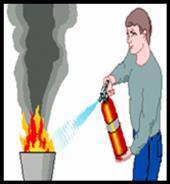
Page | 37
November 2020
Revised
Emergency Procedures for:
Gas Leaks, Fumes, Vapors
College of The Albemarle utilizes natural gas in numerous buildings on campus. If you smell Natural Gas (rotten egg smell), contact Campus Safety & Security.
If the source of the leak is known and easily correctable, such as turning off a Bunsen burner or a kitchen appliance, do so immediately.
Campus Safety & Security personnel will assist with venting the affected area and in determining if evacuation is necessary.
If the leak is not readily apparent or is not easily correctable, evacuate the area immediately.
If evacuation is necessary:
DO NOT pull the fire alarm.
DO NOT touch light switches or electrical equipment.
DO NOT USE a TELEPHONE in the affected area (this can cause a spark, which could ignite the gas and cause an explosion).
Verbally notify Campus Safety & Security (or call away from the affected area).
Verbally notify everyone to evacuate quickly and orderly
Assist persons with disabilities in exiting the building.
Once outside, get away from the building Do not smoke, use cell phone, or other electrical devices in the area of the affected building.
DO NOT start vehicles within areas of gas leaks
Campus Safety & Security assess leak – notify Piedmont Natural Gas - 1-800-483-5702
Revised November 2020
Page | 38
This Page Left Intentionally Blank Page | 39 Revised November 2020
Emergency Procedures for: HAZARDOUS MATERIALS SPILL
Contamination by hazardous materials can occur by physical contact or inhalation At COA campuses, hazardous material containers are required to be labeled with information regarding the health hazards of the substance. Individuals who believe they have been contaminated by contact with, or inhalation of, a known or suspected hazardous material should immediately seek emergency response assistance.
Report any spill of a hazardous chemical or radioactive material immediately to Campus Safety & Security - Extension 2228 or 252-335-2348 or 252-312-3905
Campus Safety & Security will determine the extent and nature of the accident and ensure the scene is cordoned off
Request assistance from Facilities Management staff if indicated. Facility Management personnel will assess the spill and, if properly trained and possible, clean up the material Material is to be saved and disposed of according to approved hazardous material disposal methods.
Request emergency services support – call 911 (fire, EMS and Emergency Management ) as appropriate.
If there is an immediate danger to occupants evacuate the building by pulling the fire alarm. Direct everyone to walk quickly to the nearest marked exit.
Report to Emergency Assembly Area and remain there until released by emergency response personnel or Campus Safety & Security. It is important that all individuals from the building be accounted for.
Assist persons with disabilities in exiting the building.
When the fire alarm is sounded, Building/Floor Coordinators should check within all areas of their responsibility to be sure everyone has evacuated. Close, but do not lock any doors as leaving.
If materials are spilled on the clothing or skin, have the contaminated individual stand under a shower for a minimum of 15 minutes. If the materials are in the eyes, rinse the eyes for a minimum of 15 minutes Have the individual contact a physician as soon as possible after the exposure to the material even if no injuries are apparent. Send a copy of the MSDS of the suspected contaminating material with the individual to the physician.
Campus Safety & Security will provide the responding emergency response personnel information to include: Location of the spill, status of the evacuation, personnel missing that may still be in the building, and special hazards associated with the building.
ERT analyzes the emergency and makes a decision on closing the campus
Page | 40
Revised November 2020
Development Officer and External Relations implements appropriate communications.
ERT debriefs incident.
Revised November 2020
Page | 41
Emergency Procedures for: LOCKDOWN
At times a life-threatening, hostile or hazardous situation may arise on or near College of The Albemarle campuses requiring the implementation of a lockdown Such a procedure exists to protect human life and property and makes resolution of a threatening situation easier for law enforcement agencies.
Example of a life-threatening or hazardous situation includes, but is not limited to:
Someone has a gun or weapon on campus or there is an active shooter or shots are heard on campus
Execution of a high risk search or arrest warrant of a potentially dangerous suspect
Serious crime that is actively occurring on campus (e.g.: homicide, hostage situation, aggravated assault, robbery with a deadly weapon, sexual assault, etc )
Serious crime committed in close proximity to the campus or a campus building (e g : homicide, hostage situation, aggravated assault, robbery with a deadly weapon, sexual assault, etc )
Notification of a Lockdown will be made by: COA’s Emergency Communications System.
When instructions are given for a “lockdown” by a designated administration official (e g.: President, Campus Dean, Campus Safety & Security), the following procedures are to be implemented immediately if the incident is in your vicinity or occupants do not believe they can safely flee from the building:
1. Active Shooter on Campus
Locate a safe classroom, office or meeting room - assist others in moving to the safe room
Secure the door by locking it. If you don’t have a key, barricade the door to prevent the shooter from opening the door
Close any window shades in the room.
Turn off all lights.
Cover the window in the classroom door
Move away from doors and windows.
Seek concealment underneath a desk or behind another piece of furniture. Stay as low to the floor as possible. Page | 42
Revised November 2020
Turn off all cell phones or set them on silent mode so that the suspected shooter cannot hear them. Use one phone to quietly call 911 and Campus Safety & Security (Extension 2228 or 252335-2348 or 252-312-3905 ) to notify them of gunfire and give your location and the number of the cell phone you are using.
Remain in the safe location until law enforcement or Campus Safety & Security tells you it is safe to leave.
If you are out-of-doors seek concealment behind cars, dumpsters, or other large objects Use extreme caution when moving across campus.
Emergency Response Team (ERT) will report to the nearest, safe designated Emergency Operations Center
ERT analyzes the emergency and makes a decision on closing the campus.
Development Officer and External Relations implements appropriate communications.
ERT debriefs incident.
2 Serious Crime Occurring or Committed in Close Proximity to Campus:
Specific instructions/actions to be taken will be based upon the specific crime or incident that is or has recently occurred, and will be disseminated by the appropriate means to the campus community.
The actions listed under the Active Shooter on Campus above may apply but will ultimately be determined by the Emergency Response Team (ERT). It is critical for everyone subject to lockdown follow the instructions of Law Enforcement Officials and Campus Safety & Security.
DO NOT speak with the media following the incident. Media will be handled by PIO
Revised November 2020
Page | 43
Emergency Procedures for: MEDICAL EMERGENCY
Never administer medical assistance beyond the level of your training
Call 911 if:
The person has lost consciousness
The person cannot breath.
The person has chest pains
The person has a severe injury.
Call Campus Safety & Security - Extension 2228 or 252-335-2348 or 252-312-3905.
In the event of a medical emergency or injury requiring the call to Campus Safety & Security and/or 911:
Stay on the phone and provide the following information:
o Your location
o What has happened?
o How many people are ill or injured?
o What first aid is being provided (if any) and by whom?
Stay with the person.
Reassure them that help is on the way. Keep them still and comfortable until help arrives.
Do not move an injured or ill person unless the person is at risk of further serious injury.
Do not administer medication, food, water or stimulants
Send another person to the closest exit to lead emergency response personnel to the injured person
Ask the person if there is anyone he or she wants notified about the emergency Obtain the name and phone number of the individuals to be notified – Emergency Response Team (ERT) member should make these calls.
Revised November 2020
Page | 44
Take measures to protect yourself against direct contact with the victim's body fluids including blood, urine, saliva, and other body secretions Hepatitis, AIDS, meningitis, tuberculosis, colds, and flu can be spread by contact with body fluids.
If the individual is transported to a medical facility, Campus Safety & Security - contact the Development Officer and External Relations
Any illness or injuries should be recorded on an Incident/Accident Report Form and submitted to Human Resources within 24 hours of the incident, regardless of the severity of the injury or illness
Campus Safety & Security/PIO may contact select members of the ERT as necessary
Development Officer and PIO’ implements appropriate communications (HIPPA, etc.)
Under no circumstances should you give your opinion about what might be wrong with the individual or recommend a specific health care provider. If the patient is too sick or injured to leave on his or her own, help arrange transportation Under no circumstances should staff or faculty transport ill or injured persons
Revised November 2020
Page | 45
Emergency Procedures for: POWER OUTAGES
If sufficient light exists for safety and instruction, classes should continue Most rooms on campus will have enough ambient light to continue activities. If possible, open blinds or shades to let outside light in.
For those in a shop or a lab, turn off gas burners or equipment which, if unattended when power is suddenly restored, might pose a danger or a fire hazard.
If you don’t have sufficient light to continue working safely or if you are instructed by Campus Safety & Security, move to an exit with natural light or to an outside location, weather permitting.
When leaving a work area or site, take essential personal possessions and lock offices and or class rooms.
Assist persons with disabilities. Designate a responsible person to stay with any students with physical disabilities until assistance arrives. Do not leave students with disabilities alone in the classroom
In certain instances the phone system may not function due to the loss of power. Use a cell phone to call for assistance, if needed
If anticipated the power outage will be short in duration; normal operations will resume ASAP.
If outage is widespread or expected to last for an extended period, the Facilities Director and select members of the Emergency Response Team (ERT) will analyze the situation and make a decision on closing the campus
Development Officer and PIO implements appropriate communications, as needed.
ERT debriefs incident.
If a power outage occurs at night, classes may be excused after 15 minutes. When the lights go out, please remain calm, use whatever light sources available, and remain in room or area.
Wait for 15 minutes If the lights have not come back on, students and staff should make their way to their cars and leave the campus.
Please remind people to:
• Walk to their cars in groups and use caution
• Look out for other people walking to their cars when driving out of the parking lots
• Treat any intersection without working signal lights as a four-way stop
Page | 46
Revised November 2020
Assist persons with disabilities. Call Campus Safety & Security - Extension 2228 or 252-335-2348 or 252-312-3905 for assistance. Designate a responsible person to stay with any students with physical disabilities until assistance arrives Do not leave students with disabilities alone in the classroom.
Campus Safety & Security – notify COA President, Campus Dean and/or other appropriate personnel.
Development Officer and PIO implements appropriate communications
ERT debriefs incident.
Revised November 2020
Page | 47
Emergency Procedures for: PROTEST
Not all protest/demonstrations are unlawful The U S Supreme Court has ruled that certain activities are protected under the U.S. Constitution Most campus demonstrations will be peaceful Attempt to carry on business as normally as possible Avoid provoking or obstructing the demonstrators However, any protest on college property that interferes with the educational function of the institution or in which violence, property damage, or other unlawful behavior occurs is unlawful.
A Protest is considered “peaceful” and no action is necessary unless one of the following conditions exists:
• Interference with the normal operations of the college
• Prevention of access to offices, building, or other facilities
• Threat of physical harm to persons or damage to facilities
Peaceful Protest
Call Campus Safety & Security - Extension 2228 or 252-335-2348 or 252-312-3905
Campus Safety & Security will monitor for acts of vandalism or signs of escalation.
Campus Safety & Security will contact outside assistance as needed
Preplanned large protests/demonstrations may have local law enforcement presence ahead of time.
Emergency Response Team (ERT) meets to discuss appropriate actions/options (i.e. peacefully disband gathering and arrange for a representative from the assembly to meet with administration).
Development Officer and PIO implements appropriate communications
ERT debriefs incident.
Disruptive/Destructive Protest
Call Campus Safety & Security - Extension 2228 or 252-335-2348 or 252-312-3905
Identify key individuals (clothing, physical description, and activity engaged in )
Campus Safety & Security will contact outside assistance as needed
Page | 48
Revised November 2020
Emergency Response Team (ERT) analyzes the emergency and makes a decision on closing the campus.
Development Officer and External Relations implements appropriate communications
ERT debriefs incident.
Revised November 2020
Page | 49
Emergency Procedures for: SEVERE WEATHER/TORNADO
In the event of inclement or severe weather College of The Albemarle may choose to close or delay its operations in whole or in part. Because weather conditions and other emergencies may not affect all campuses directly, this decision may be made on a campus by campus basis.
The decision to cease operations may be made at any time during the day depending on conditions Students, faculty and staff can obtain information about closure and delay via:
COA Regroup System
TV Stations
o WVEC TV – Channel 13
o WITN TV – Channel 7
o WTKR TV – Channel 3
o WAVY TV – Channel 10
Radio Stations
o WKJX – 96.7 FM (MIX 96) Elizabeth City, NC
o WCXL – 104.1 FM (Beach 104) Kill Devil Hills, NC
o WRSF
105.7 FM (Classic Hits)Hertford, NC
The college operator will be notified of warnings generated by the National Weather Service Agency –Wakefield, VA via the Pasquotank-Camden County Emergency Agency Many cell phones also have apps that alert for severe weather warnings so notification may be received in various methods
Severe thunderstorms are the most likely natural occurrence that could affect the college. Lightning causes around 100 deaths in the U S. annually During severe weather, before lightning strikes, be alert for darkening skies, flashes of light, or increasing wind Listen for the sound of thunder. If you can hear thunder, you are close enough to the storm to be struck by lightning. To lessen the possibility of injury the following steps should be followed
Suspend outdoor activity immediately and instruct everyone to get to a safe place. Substantial buildings provide the best protection. Once inside, stay off corded phones and away from any wiring or plumbing Avoid sheds, small or open shelters, dugouts, bleachers or grandstands If a sturdy building is not nearby, a hard-topped metal vehicle with the windows closed will offer good protection.
Stay inside Do not resume activities until 30 minutes have passed since the last thunder was heard.
If someone is struck by lightning, call 911 for immediate medical attention Provide CPR or use an Automated External Defibrillator, if needed. Lightning victims do not carry an electrical charge and are safe to touch. Page | 50
Revised November 2020
–
Designation of Tornado Watch and Warning:
Watch: A Tornado Watch is issued when weather conditions are favorable for the formation of tornados
During a tornado watch faculty and staff should be alert to probability of severe weather and be prepared to move quickly to safe areas
Warning: A Tornado Warning is issued when a tornado funnel is sighted or indicated by weather radar.
Upon notification of a tornado warning classes should cease immediately. Students and faculty should shut off lab equipment for which they are responsible and proceed to the closest safe area.
Instructors and Building/Floor Coordinators will assist with getting staff and student into the closest safe areas. These areas will be on the first floor, in interior hallways and interior rooms. Auditoriums, gymnasiums, large rooms or window areas should be avoided.
Assist persons with disabilities in getting to a safe area.
All persons are to stay in the safe area until an all-clear signal is given Faculty should stay with their students. If a person chooses to leave the Safe area, they do so at their own risk.
Classes will resume once an all-clear signal is given, unless an announcement is made otherwise
Emergency Response Team meets and analyzes the situation, as needed, to take appropriate actions
ERT debriefs incident.
Evening/Weekend
Campus Safety & Security will alert staff of impending threatening weather conditions Staff will assist Campus Safety & Security in alerting campus visitors, staff, and students to proceed to safe areas.
All other procedures will remain the same.
Revised November 2020
Page | 51
Emergency Procedures for: SEXUAL ASSAULT
Call Campus Safety & Security - Extension 2228 or 252-335-2348 or 252-312-3905.
Provide details of the incident.
Campus Safety & Security – assess the situation and contact 911.
Try to determine severity and extent of injuries to victim.
Use rubber gloves to handle victim.
Treat only life threatening injuries.
Avoid washing areas where bodily fluids may provide evidence
Move the victim (if possible) to a comfortable setting (private office)
Don’t leave the victim alone, provide emotional support.
Gently discourage the victim from washing until seen by a doctor.
Offer the victim care and first aid, but avoid destroying any evidence
Assign someone to meet and guide emergency responders to the victim.
Campus Safety & Security – contact Title IX Coordinator
File a Maxient report.
Director of PIO implements appropriate communications.
Appropriate Emergency Response Team (ERT) analyzes situation – works with Law Enforcement on investigation.
ERT debriefs incident.
Revised November 2020
Page | 52
This Page Left Intentionally Blank Page | 53 Revised November 2020
Emergency Procedures for: SHELTER IN PLACE
In emergency situations where the risk is outside (e.g., hazardous materials release or airborne Toxin), it will be important to minimize exposure to the risk and to deliver information to the college community quickly and efficiently. In these circumstances, Shelter-in-Place may be required.
Upon the Shelter-in-Place alert, students, faculty and staff who are not already indoors should immediately enter the nearest building
If already indoors, remain in place until directed otherwise by Campus Safety & Security or emergency response personnel.
Faculty members who are conducting class should remain in their classroom.
Facility Management should turn off air conditioning or heating units where possible.
Close all doors and windows and wait for further instruction. If possible, go to a room with no windows, at a minimum stay away from windows and doors
If possible, seal any gaps around windows and doors with wet towels, clothing, etc.
Stay inside until informed by emergency personnel it is safe to go outside.
PIO implements appropriate communications
ERT debriefs incident.
Different emergencies call for different responses. The following are basic courses of action to remember in specific shelter-in-place emergencies:
During a Chemical Release, seek shelter in a room above ground level (most chemicals settle to the lowest level), preferably one without windows
During a Biological Release, seek shelter in an internal room, preferably one without windows
In the event of Nuclear or Radiological Release, stay indoors and go to a basement or other underground area if available.
Revised November 2020
Page | 54
This Page Left Intentionally Blank Page | 55 Revised November 2020
Emergency Procedures for: SUICIDE ATTEMPT
Suicide is a leading cause of death among college students Faculty and staff are often the first people to identify students in distress. There are common warning signs to take seriously.
Verbal signs (80% of cases) including “I’m going to kill myself” , “I wish I were dead”, “I just can’t go on anymore”. Suicide notes or suicidal ideation expressed in creative writing are common
Behavioral signs (20% of cases) including personality changes, crying spells, poor self-care, irritability, changes in appetite, decreased energy and inability to concentrate.
Situational warning signs include: recent loss or trauma, history or attempted suicide, depression, drop in academic performance
Action:
Always take a suicide threat seriously Stay calm and appear confident, caring, understanding and knowledgeable about resources available.
If you feel your personal safety is at risk, leave immediately
If you feel there is no threat of personal safety, remain with the person. If possible, engage the person in conversation Talk about suicide openly and directly Ask the following questions in a direct and calm manner:
Have you been thinking about killing yourself?
Have you ever thought about acting on these feelings/thoughts?
Do you have a plan for how you would harm or kill yourself?
Do you have access to weapons? Pills?
Have you ever tried to harm yourself in the past?
Assess risk: vague and passive responses pose less risk, while clear active and imminent responses pose higher risk. If the individual has clear thoughts of suicide, a well-defined plan and intention to implement the plan within a short period of time, the person is in need of immediate assistance
Call Campus Safety & Security - Extension 2228 or 252-335-2348 or 252-312-3905
If there is an imminent threat – Campus Safety & Security call 911
If there is talk of suicide but no imminent threat – Campus Safety & Security call College Care Team.
File a maxient report.
Page | 56
Revised November 2020
Campus Safety & Security notifies select Emergency Response Team (ERT) members.
PIO implements appropriate communications
ERT debriefs incident.
Don’t:
Leave the individual alone.
Transport the individual to the hospital or doctor’s office in your vehicle.
Appear or sound shocked by anything the person tells you
Make promises you can’t keep. Avoid over-committing yourself.
Ignore your limitations. Do not attempt to provide therapy or counseling.
Minimize the situation or the individual’s feelings
Revised
Page | 57
November 2020
Emergency Procedures for: VIOLENCE IN THE WORKPLACE
College of The Albemarle is committed to providing a safe and healthy workplace for all employees. To that end, it is the policy of COA that workplace violence in any form is unacceptable. Any form of violence by an employee against another employee, student, vendor or visitor to the College, including but not limited to physical attack, intimidation, threats or property damage, will be cause for disciplinary action up to and including dismissal as unacceptable personal conduct.
Specific examples of conduct that may be considered threats or acts of violence include, but are not limited to, the following:
• Threats or acts of violence occurring on college property, regardless of the relationship between the college and the individual involved in the incident.
• Physical assaults and direct or implied threats to harm an individual or her/his family, friends, or associates.
• Intentional destruction, threat of destruction or sabotage of an individual’s personal property or property owned, operated or controlled by the college
• Harassment via threatening telephone calls, letters or other forms of verbal, written, or electronic communications.
• Acts of conspiracy to intimidate or attempt to coerce an individual to commit a wrongful act, as defined by applicable law, administrative rule, policy or work rule.
Intimidation resulting from the improper exercise of power or authority.
• Acts or unruly conduct that disrupts the natural work or educational environment of the college or which result in fear for personal safety
• Willful, malicious or repetitive following of another person (also known as “stalking”).
• Unauthorized possession of or inappropriate use of firearms, weapons or any other dangerous devices on college property. A Weapon is any object used to attack or intimidate another person.
Slurs or derogatory remarks regarding another person’s ethnicity, natural origin, gender, religion, or religious affiliation, disability or sexual orientation.
• Intimidation by bullying, using “fighting words” or profanity, or exhibiting obscene gestures which create in the mind of an individual a reasonable belief of immediate harm.
• Physically touching another individual in an intimidating, malicious, or sexually harassing manner including hitting, slapping, poking, kicking, pinching, grabbing, pushing, etc
College of The Albemarle requires faculty, staff, students and visitors to report any incident of workplace violence, verbal or physical, to their supervisor, the Director of Campus Safety & Security, Human Resources, Campus Dean or a member of the Emergency Response Team.
Revised November 2020
Page | 58
College of The Albemarle shall not discipline a reporting party, unless the accusation was made maliciously and without credibility.
Although incidents of workplace violence can be initially reported verbally (by phone or in person), they shall later be documented in writing and will be confidentially held by the office of Human Resources.
If a supervisor suspects that an employee has work related or personal problems that could lead to workplace violence, the supervisor should confer with the Director of Human Resources. When appropriate, the employee should be encouraged to seek confidential counseling and support.
If a supervisor or other college employee suspects that a student is exhibiting signs that may lead to workplace violence, the supervisor or employee should confer with the VP of Student Success & Enrollment Management, Campus Safety & Security and, if applicable, the respective Campus Dean. These personnel should assess the situation and counsel the individual or make a referral, as appropriate
Each and every employee shall provide prompt and accurate reporting of all incidents of “workplace violence” to Campus Safety & Security, regardless of whether or not physical injury has occurred The College will take all violent and threatening incidents seriously by investigating and taking the appropriate action to mitigate any hazard that would place any of COA’s employee(s) at risk.
Page | 59
Revised November 2020
RECOVERY
Some situations may cause the campus to cease in some or all college operations. In situations when college operations have been shut down, the first step to recovery is to ensure that the campus is safe and secure. The second step will be to restore critical infrastructures and campus facilities/grounds to a level to support critical functions. The third step will be for the Emergency Response Team to determine if and how to return to normal campus operations.
If College Operations have been hampered or suspended due to an emergency event, the Emergency Response Team (ERT) shall:
Deliberate and recommend a course of action designed to render the College and its facilities back to full service in the shortest time frame possible
Provide for access and clearing of debris to college roads and buildings, as needed.
Conduct damage assessment, structural evaluation, and remediation, as needed.
Arrange for the use of any temporary facilities.
Be responsible for disseminating periodic information updates to the College community.
Assess psychological/physical needs of students/staff.
Assign personnel to provide the needed services/interventions for students/staff. Schedule place and time for initial interventions and provide counseling/crisis resources, as needed.
Return to the “business of learning” as quickly as possible - Establish schedules for returning students/staff to college.
Inform students/staff that additional services are available. Refer students/staff that appear to need additional intervention.
Assess cost and insurance determinations and application for state and federal aid, where available.
Maintain continuous communication of status of recovery efforts; and final incident response assessment.
Assign college staff and/or contract outside professionals, as needed, to conduct repairs, overhaul equipment, determine if buildings are structurally sound, etc.
Revised November 2020
Page
60
|
Prior to termination of the emergency and/or deactivation of the Emergency Operations Center, it is important that the Emergency Response Team conducts the post-incident review process. This process is undertaken to identify deficiencies in the plan and to determine necessary actions for correcting the deficiencies. The post-incident review is also intended to identify which response procedures, equipment, and techniques were effective, which were not, and the reason(s) why.
The President of the college, or designee, will determine when to terminate the emergency, deactivate the Emergency Operations Center, and transition to normal campus governance and operations.
Page | 61
November 2020
Revised
Evacuation Assembly Areas (EAAs)
Elizabeth City Campus
EAA #1
EAA #2
200 ft - Front of “A” Building – Grassy Area (stay out of parking area)
200 ft - Front of “B” Building – Grassy Area (stay out of parking area)
EAA #3 200 ft - Front of “C” Building – Grassy Area (stay out of parking area)
EAA #4
200 ft - Front of “FC” Building – Grassy Area (stay out of parking area)
EAA #5 Owens Center – Field right side of YMCA
EAA #6 Building “D”, Pottery Building & Part of “C” Building Proceed to field left of the batting cages
Revised November 2020
Page | 62
Collegeof The Albenarle (EiizabethCityCa u;)
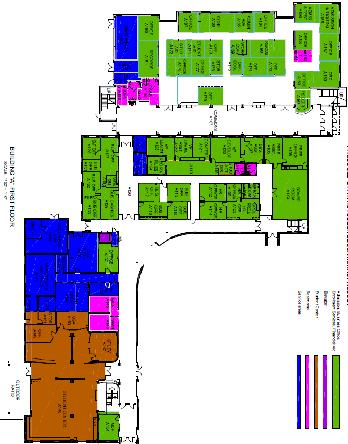
I
• . •' '' o a
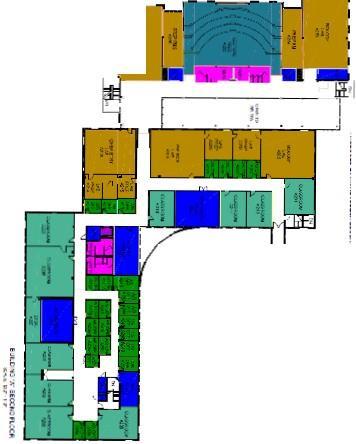

t' iJ . ' •·ill' • .. t t!''fl ll If " "

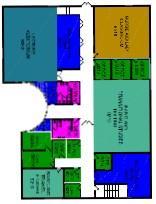
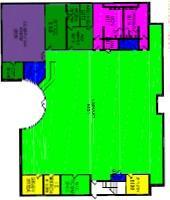

• .. ' • il \;> " ! "! ' !> B • > , n .n' j !•• • X j 1 l! lI ! ' • • ; < •• :l • .. ! • ,J j:; ::;::i '"•
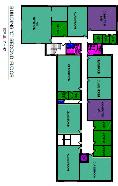
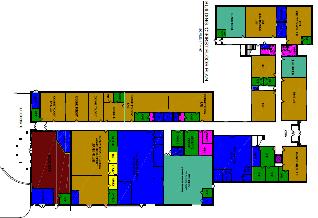

' · -\.., \ } .. 11111111 •/ "''t I"
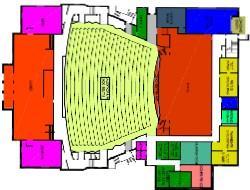
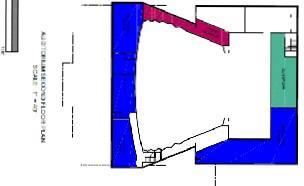

• i I ' •
111mm



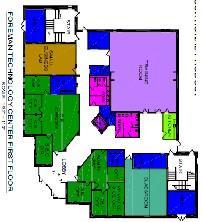
•• ,. i; l' 10



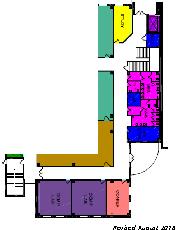
• e .8 , 0 .. .. "' ! ! i ., '" 6 " liPP! i ! ' I I n , G , i ' I 'i '" I .7; " " iill " "''t I"





















